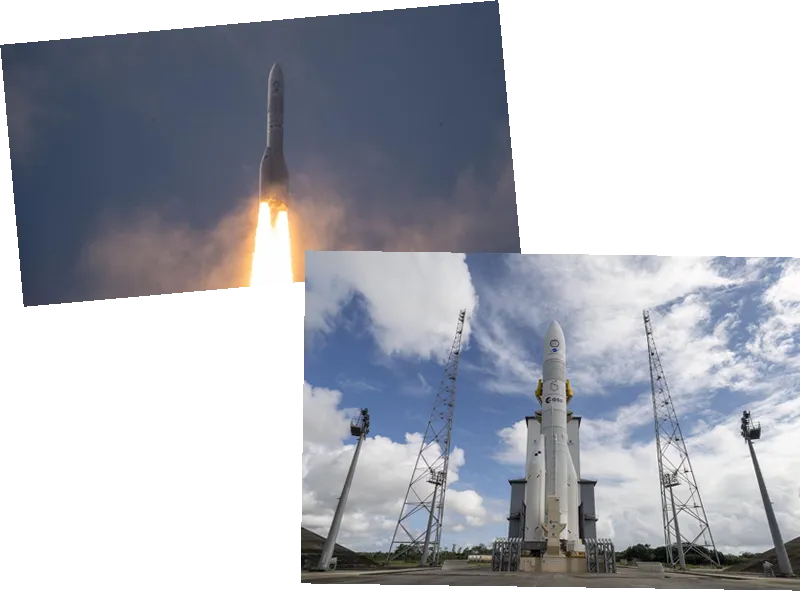Ariane 6, the largest rocket developed in Europe, successfully launched from the European spaceport in French Guiana on Tuesday evening, marking a significant milestone for the European space program. The event was greeted with enthusiasm by Martin Sion, executive chairman of ArianeGroup, and Philippe Baptiste, president of the National Center for Space Studies (Cnes), who both celebrated Europe's return to independent space access.
The Ariane 6, a technological marvel as tall as an 18-story building and weighing over 500 tons, aims to provide Europe with independent access to space. This launch comes after nearly a year of delays and significant cost overruns, with the total budget approaching 4 billion euros. Lucía Linares, head of transport strategy at the European Space Agency (ESA), expressed confidence in the rocket's capabilities, citing successful tests leading up to the launch.
The inaugural flight of Ariane 6 serves as a critical step for Europe, especially after the retirement of Ariane 5, the abandonment of Soyuz, and the setbacks of the Vega C launcher. This new rocket is designed to reduce production costs and increase sustainability, with a primary mission to launch European institutional missions. Despite criticism from figures like Elon Musk, who argue that non-reusable rockets have no future in the market, the first 30 flights of Ariane 6 are already sold, including 18 launches for Jeff Bezos' Kuiper internet system.
The launch aims to place several satellites and capsules into a circular orbit 580 kilometers above Earth. Among these are two small devices developed in Spain, one by students from the Polytechnic University of Catalonia. The mission includes a commercial phase to launch cubesats and a demonstration phase to test the upper stage's behavior. The rocket's upper stage, capable of multiple thruster firings, will help deploy satellite constellations and re-enter the atmosphere to minimize space debris.
ESA is also focused on reducing greenhouse gas emissions, developing a hydrogen electrolysis manufacturing plant at the Kourou spaceport to fuel future rockets. The Ariane 6's current configuration includes two solid fuel boosters and a main and upper stage that consume liquid oxygen and hydrogen. Future plans include a more powerful version, the Ariane 64, with four engines.
While the Ariane 6 is not yet qualified to carry astronauts, its successful launch marks a significant achievement for Europe. ESA hopes to increase the number of launches to ten per year, with contributions from 13 countries, including significant input from France and Spain. Despite its current limitations, the Ariane 6 represents a crucial step towards Europe's goal of achieving independent and sustainable space exploration.






